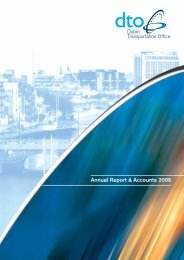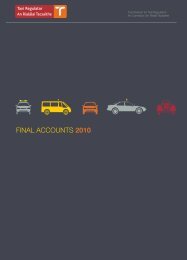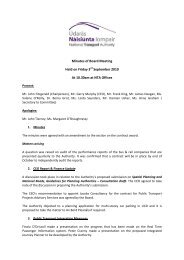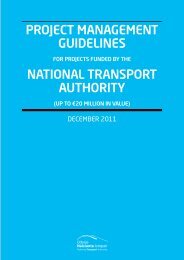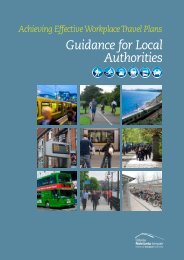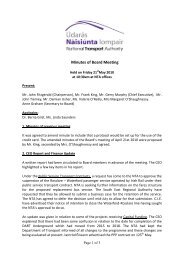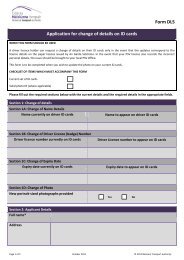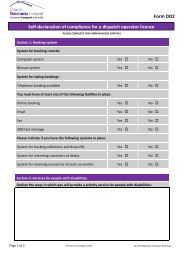Greater Dublin Area Draft Transport Strategy 2011-2030
Greater Dublin Area Draft Transport Strategy 2011-2030
Greater Dublin Area Draft Transport Strategy 2011-2030
- No tags were found...
Create successful ePaper yourself
Turn your PDF publications into a flip-book with our unique Google optimized e-Paper software.
8.1 Introduction<strong>Transport</strong> is a derived need – that is, people do notin general make trips just for the sake of travel,but rather to access work places, schools, shopsand other services. It follows that the location ofservices relative to where people live is a criticaldeterminant of the need to travel, travel distancesand the means of travel chosen.Smarter Travel acknowledges the pivotal role ofland use planning in achieving sustainable transporttargets. Achieving these targets will requirebuilding upon the major shifts in land use policies,which have occurred in recent years, over the lifetime of this <strong>Strategy</strong>. The past trends that havecreated low density settlements remote from towncentres and services (schools, shops, employmentand leisure facilities), coupled with the dispersednature of the locations of these services, haveresulted in unsustainable travel patterns. Thesetrends need to be redressed.The implementation of the <strong>Strategy</strong> supportedby the Regional Planning Guidelines for the GDA,integrated with the local authority DevelopmentPlans and Local <strong>Area</strong> Plans, will provide theframework for the achievement of SmarterTravel objectives and other economic, social andenvironmental objectives of this <strong>Strategy</strong>.8.2 Integration of Land use and <strong>Transport</strong>Walking and cycling are the most efficient modesof transport as they require no external energysource and produce zero direct environmentalemissions. Hence, from a transport perspective, themost efficient settlement and land use patternsare those that locate the largest proportion of thepopulation within walking and cycling distance oftheir work, schools, shops and other services.The role of transport and how it interacts withthe urban environment is an essential element inimproving the quality of life of the communitiesof our towns and cities. There is an importantbalance that must be struck between providing forpeople’s travel needs, and maintaining a liveableenvironment with people friendly streets andspaces with a high quality design.Based on best international practice, there area number of key principles which will criticallyinfluence the quality of life in our towns and citiesin the future. These key principles, applied in thedevelopment of this <strong>Strategy</strong>, included:• A strong focus on pedestrian and cyclingmovement for local trips;• Exploiting the ability of public transport to caterfor the mass movement of people while using afraction of the fuel and street space required byprivate cars;Chapter 8: page 1 www.<strong>2030</strong>vision.ie




